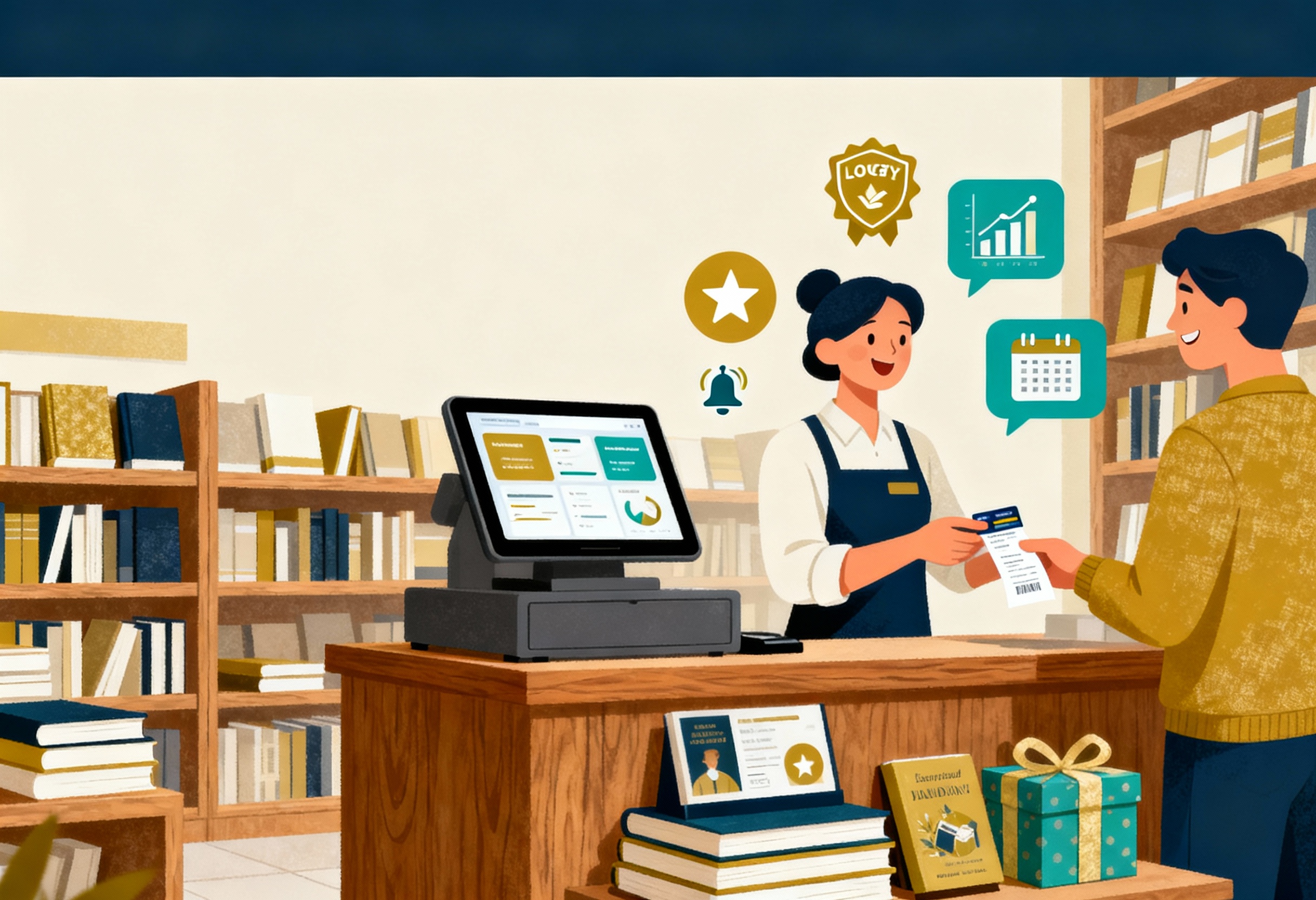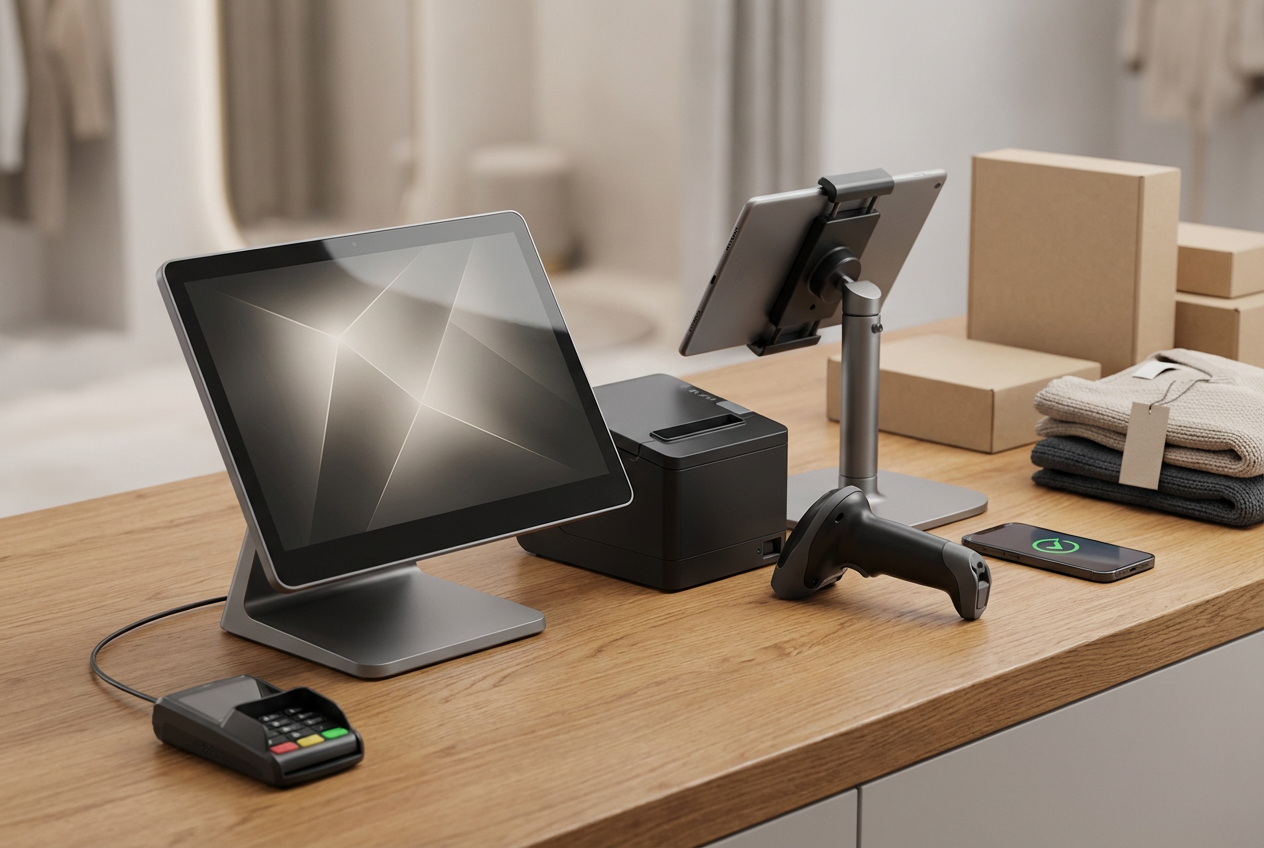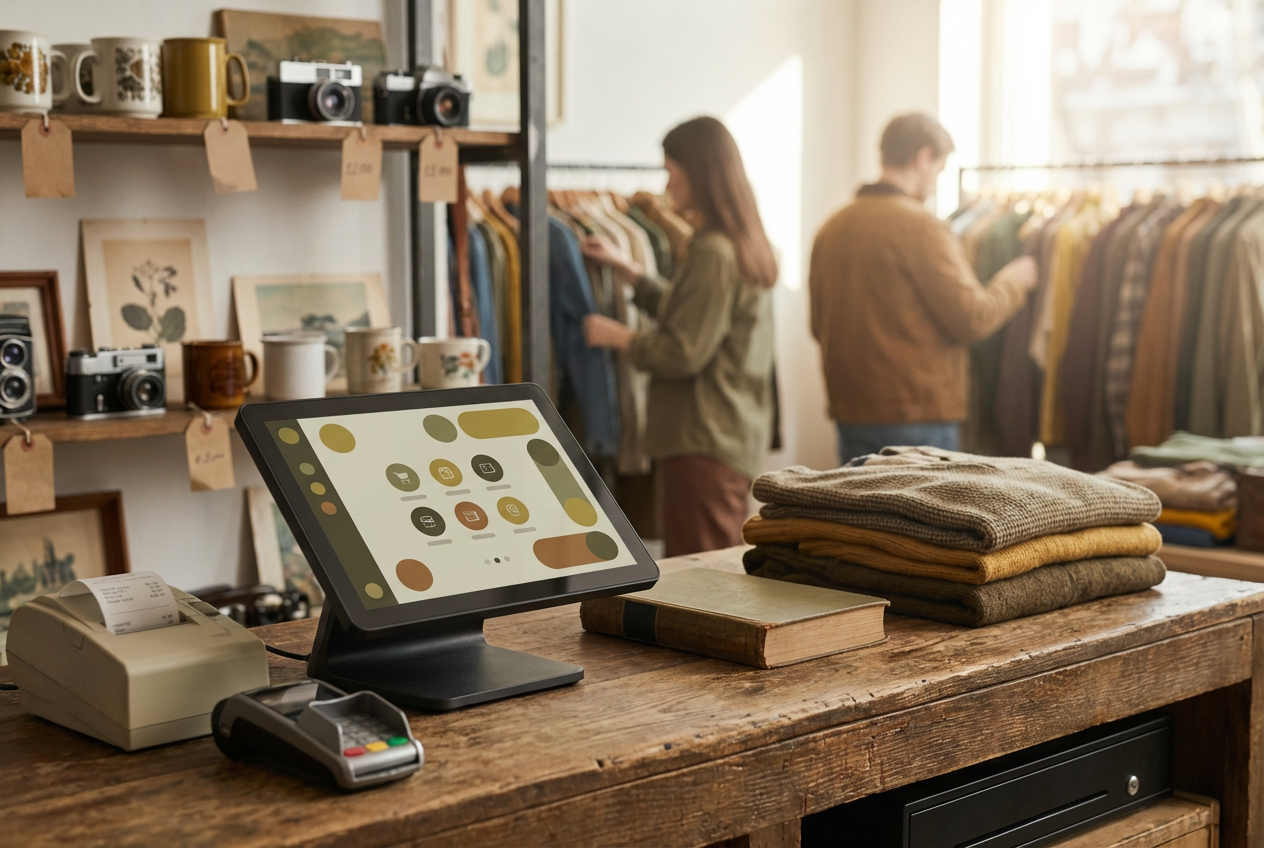Customer loyalty has become one of the main forces shaping the sustainability of bookstores. Readers today expect more than access to titles, they look for meaningful engagement, recognition, and personalization. Bookstore POS systems play a larger role in meeting those expectations by unifying transactions, customer data, and loyalty activities under one framework. They turn every purchase and interaction into opportunities to build lasting relationships. This article from ConnectPOS advises how bookstores can apply POS-driven strategies to strengthen customer retention and create experiences that keep readers coming back.
Highlights
- Bookstores maintain loyalty by understanding reader motivations and turning each interaction into an opportunity for deeper engagement.
- Modern bookstore POS systems connect transactions, preferences, and loyalty activities, shaping personalized experiences that encourage repeat visits.
Customer Retention in the Bookstore Industry
Customer retention determines how well bookstores adapt as digital reading shifts buyer behavior. In 2023, printed book sales reached 767.36 million units. Despite a slight decline from the previous year, this total surpassed pre-2021 levels, showing that readers continue to value the physical reading experience.

Physical bookstores are under growing pressure from online platforms driven by convenience and tailored recommendations. The online book services market reached USD 23.38 billion in 2024 and is projected to climb to USD 32.45 billion by 2030, reflecting the steady migration of readers toward digital purchasing channels.
Retention begins with understanding reader motivations. Tracking purchase patterns and event participation through bookstore POS systems helps stores refine their selections and shape more meaningful experiences. Personalized reading suggestions and engagement programs such as author meetups or early access to new releases build stronger emotional connections, creating a sense of belonging that extends beyond transactional rewards.
Maintaining engagement depends on consistent communication across all touchpoints. For bookstores, this means tailored newsletters, thank-you notes, and genuine social interactions. When a POS system for bookstore connects customer data with authentic outreach, each purchase becomes part of an ongoing relationship rather than a one-time sale.
The Role of POS Systems in Building Reader Loyalty
Modern bookstore POS systems have evolved beyond transaction processing. For bookstores, they act as the central point of connection between readers, products, and staff interactions. When properly configured, a POS system helps stores build familiarity with customer preferences, support consistent experiences across channels, and strengthen long-term engagement. Each data point such as purchase, event attendance, or loyalty redemption becomes part of a broader relationship between the store and its readers.
- Centralized Customer Profiles: A unified profile gathers purchase history, favorite genres, event participation, and loyalty activity into one record. This helps staff recognize returning customers, understand their reading preferences, and deliver service that feels familiar and personal.
- Personalized Checkout Experience: A connected checkout system recalls past purchases, preferred payment methods, and even wish lists. Staff can reference this data to suggest complementary titles, upcoming book launches, or event invitations that align with individual tastes.
- Loyalty Integration: Connecting the POS system with membership programs allows points, rewards, and vouchers to be automatically recorded and redeemed. This consistency encourages repeat visits, as readers can easily track their engagement and feel acknowledged for their continued support.
- Smooth Omnichannel Connection: POS integration across physical and digital storefronts maintains one continuous customer experience. Whether a book is purchased in-store or online, the transaction contributes to the same record, allowing readers to receive personalized provides without data loss or duplication.
- Real-Time Inventory Insights: Access to up-to-date stock information helps staff answer inquiries quickly and accurately. When a title is unavailable, the system can recommend alternatives, record pre-orders, or suggest pickup at another branch, maintaining service quality and customer satisfaction.
- Data-Driven Communication: The POS system converts transactional data into insights that guide marketing efforts. Stores can send tailored newsletters, curated reading lists, and personalized thank-you notes that reflect genuine understanding rather than generic outreach.
- Improved Customer Service: Armed with accurate customer histories and purchase details, staff can deliver thoughtful recommendations, address complaints more effectively, and handle exchanges or refunds smoothly. The result is a customer experience that feels consistent and attentive, helping to turn casual buyers into long-term readers.
Key POS-Driven Strategies to Encourage Repeat Purchases
Bookstore POS systems now play a central role in how bookstores sustain reader loyalty. They connect purchasing behavior, inventory visibility, and engagement programs into one unified framework that supports consistent customer relationships. When applied strategically, these systems transform daily operations into a cycle of insight, personalization, and long-term retention.
Integrated Loyalty and Rewards Programs
Loyalty programs embedded within POS system for bookstore give bookstores the ability to recognize and reward consistent readers. Each purchase becomes an opportunity to accumulate points or earn exclusive benefits that reinforce habitual buying behavior. When integrated properly, these systems help staff identify repeat customers, recall past purchases, and recommend relevant titles without depending on separate databases. This creates a more natural interaction that strengthens the customer’s relationship with the store.
Beyond simple discount accumulation, loyalty integration supports deeper engagement. Readers can access personalized provides or early invitations to events based on their buying history.
For stores, the collected data clarifies which incentives have the strongest pull among different reader groups. Over time, this understanding turns loyalty from a transactional mechanism into an ongoing conversation that aligns the store’s curation strategy with customer interests.
►►► Optimal solution set for businesses: Multi store POS, Next-gen POS, Inventory Management Software (MSI), Self Service, Automation, Backorders
Inventory Accuracy and Title Availability
POS-driven inventory management determines how effectively bookstores can respond to customer demand. A system that records each sale in real time prevents both overselling and missed restocks, ensuring popular titles remain available when readers seek them. It also gives store managers a clear overview of fast-moving genres and underperforming categories, supporting better purchasing decisions.
When readers trust that their preferred titles are consistently in stock, their likelihood of returning grows. Predictive analytics within modern POS systems can forecast demand during seasonal peaks or new release periods, guiding procurement schedules accordingly. Maintaining accurate visibility over stock levels builds credibility and helps stores avoid the lost opportunities that come with “out of stock” disappointments.
Omnichannel Purchase Experience
Readers expect flexibility in how they browse and buy, moving fluidly between online catalogs and in-store visits. Bookstore POS systems that connect both environments give stores the ability to maintain one continuous customer record across every channel.
A reader might reserve a title online, pay in-store, or join a virtual event linked to the same account. This consistency in access and recognition supports retention through convenience and trust.
Beyond transactional continuity, omnichannel POS setups extend the bookstore’s identity into digital spaces without losing the personal feel of physical retail. When data flows between channels, staff can acknowledge online preferences during in-person visits or suggest digital editions alongside print copies. This interaction creates a unified brand experience that keeps readers engaged across touchpoints.
Personalized Promotions and Event Management
A POS system for bookstore that connects sales history to promotional planning allows bookstores to run more relevant campaigns. Instead of broad discounts, stores can present targeted provides to customers who previously showed interest in a specific author or theme. Promotions built on data accuracy tend to see stronger participation and higher conversion because they resonate with real interests rather than assumptions.
Event management tools within POS software further deepen relationships by coordinating book launches, readings, or loyalty-exclusive gatherings. Attendance records can later inform follow-up communication or reading suggestions, closing the loop between sales, engagement, and community. Through this approach, bookstores maintain ongoing dialogue that makes each reader feel recognized and valued beyond a single purchase.
ConnectPOS: Supporting Customer Loyalty in Bookstores
ConnectPOS strengthens bookstore relationships with readers through a loyalty framework that connects in-store and online interactions. Its system records every purchase, preference, and membership activity in one place, helping retailers create experiences that keep customers engaged. Through customizable loyalty programs, tiered memberships, and data-driven engagement, ConnectPOS transforms each visit into part of a lasting reader–store relationship.
Key Highlights
- Unified Customer Records: Centralizes customer data across physical stores and ecommerce channels, ensuring accurate profiles that reflect real behavior and preferences.
- Personalized Rewards and Membership Tiers: Assigns membership levels based on total purchases and engagement, supporting custom reward rules for each group such as exclusive access or higher discounts.
- Integrated Loyalty Points System: Converts spending into points redeemable for discounts, gift cards, or special promotions, creating a sense of progression and value.
- Omnichannel Loyalty Connection: Maintains consistent customer recognition across all touchpoints such as physical stores, online platforms, and pop-up locations, keeping loyalty rewards active and unified across every shopping channel.
- Custom Rules for Repeat Purchases: Allows bookstores to design incentives like “buy X, get Y” or bonus points for specific categories such as bestsellers or new releases.
- Actionable Data and Reports: Provides insights into top loyalty customers, average spending patterns, and membership-tier performance to guide future promotions.
- Customer Engagement During Key Seasons: Sends tailored communications and campaign updates during holidays or special literary events, keeping loyal readers connected throughout the year.
- Elevate Your POS Loyalty Initiatives with Top Integrations: ConnectPOS strengthens bookstore loyalty programs through smooth integration with essential business systems. Its microservice and API-first design connects CRMs, loyalty platforms, payment gateways, ERPs, and marketplaces into a single ecosystem.
FAQs
How Can A POS system for bookstore Help Retain Bookstore Customers?
A POS system records each purchase, preference, and visit, helping stores understand readers’ habits. This insight allows staff to personalize recommendations, reward loyalty, and create stronger connections with returning customers.
What Bookstore POS systems features encourage repeat purchases?
Key features include loyalty points, tiered memberships, targeted promotions, and real-time inventory tracking. These tools make readers feel valued while keeping their favorite titles available.
How Do Loyalty Programs in POS Systems For Bookstores Influence Long-Term Relationships?
They create incentives that go beyond discounts, such as exclusive events, personalized book lists, or birthday rewards, fostering a stronger emotional link between the bookstore and its readers.
Conclusion
Sustaining loyalty in the bookstore sector depends on how well stores connect their transactional systems to customer experiences. The ideal bookstore POS systems do more than process sales; it builds understanding, consistency, and trust at every touchpoint. When integrated with loyalty programs, customer insights, and inventory visibility, it transforms how bookstores engage readers over time.
ConnectPOS supports retailers in shaping this connection through technology that unites customer data, rewards, and omnichannel journeys. To learn how ConnectPOS can help your bookstore turn daily interactions into long-term loyalty, contact our team today.
►►► Optimal solution set for businesses: Shopify POS, Magento POS, BigCommerce POS, WooCommerce POS, NetSuite POS, E-Commerce POS



